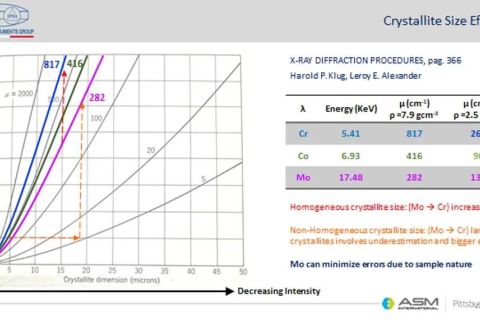
- Home
- >
News
The power conditions depend on the X-ray tube as the target material and focus type. Although Cu targets are widely used for diffraction, the use of Cu targets for residual austenite analysis is not recommended because of the strong fluorescence of iron-based materials.
Asbestos, also known as "asbestos", refers to silicate mineral products with high tensile strength, high flexibility, resistance to chemical and thermal erosion, electrical insulation and spinnability. The three most common types are chrysotile, iron and cyanite.
Sungkyunkwan University in South Korea has demonstrated that nano-Na5Ti3F14 / carbon nanocomposites have excellent electrochemical properties as the negative electrode of sodium-ion batteries.
X-ray diffractometer is a device that uses the principle of interaction between X-rays and substances to obtain information such as crystal structure and lattice constant of substances by measuring the diffraction Angle and intensity of X-rays in substances.
Characterization methods of copper monatomic catalysts are often used to determine their structure and properties, and the following are several common characterization methods.
Binder is a polymer compound used in electrode making to adhere the active substance to the collector fluid. The main function is to bond and maintain active substances.
Cement is a common building supplies, generally divided into ordinary Portland cement, Portland cement mixed materials and special cement, the use of Portland cement is more.
Recently, Applied Clay Science reported "High-pressure Raman scattering and X-ray diffraction study of kaolinite, Al2Si2O5(OH)4."
By X-ray diffraction of the material and analysis of its diffraction pattern, information such as the composition of the material, the structure or morphology of the internal atoms or molecules is obtained.












